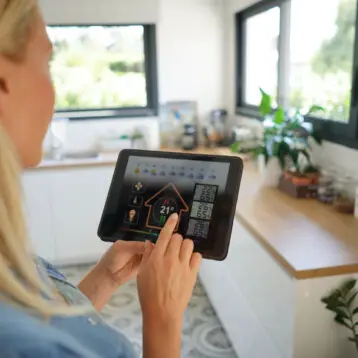From left: Professors James Sturm, Naveen Verma and Sigurd Wagner draw on a wide range of expertise to build complex electronic devices on thin plastic sheets. (Photo by Frank Wojciechowski)
Researchers at Princeton University have created ultra-thin radios which can be directly embedded on plastic sheets which and be easily applied to walls and other types of structures. This new technology has many potential applications ranging from a smart indoor communication system, structural monitoring for everything ranging from bridges to roads and buildings and more.
The system was originally designed to be used for energy management in a smart building. The idea was to design a system of sensors distributed across a building which will communicate with one another – all of them patterned on wallpaper.
–
–
The plastic sheets developed by the Princeton researchers are as thin as wallpaper and can even be painted on without diminishing their function – making them highly versatile in actual use – especially indoors. Another useful feature of the new plastic sheets is their flexibility. They can easily be applied to almost any irregular surface without any loss of functionality and thus can be adapted for use on corners or other odd places where more traditional antennas will simply not fit.
–
–
The ability to embed circuitry on plastic is new since so far it was too complicated to create circuitry in a way which will not deform the plastic due to heat However in recent years, researchers developed new techniques to avoid damaging the plastic. The main problem with hose methods was that they reduced the performance of electronic components making they inefficient radio transmitters.
–
–
The Princeton researchers were able to reduce that temperature for creating silicon thin-film transistors on plastic from about 1,000 degrees Celsius to 300 degrees. However the technology still proved challenging and much more research was needed to perfect the plastic radio transmitters.
–
–
One of the main uses of the transistors is going to be in bridge monitoring. The 2007 a highway bridge in Minneapolis collapsed. The affected area of the bridge was far too large for any current monitoring systems to practically survey. According to the researchers – “In this large area of structure, which is really huge, the problem can start at virtually any point and if you don’t have sensors at that point, you are not likely to find the problem before the damage becomes substantial”. For this reason the new plastic sheets transistor approach could be a real game changer and the team is already promising a working prototype sensor system up and running this month.
–
–
More information on the technology can be found on the Princeton website.











